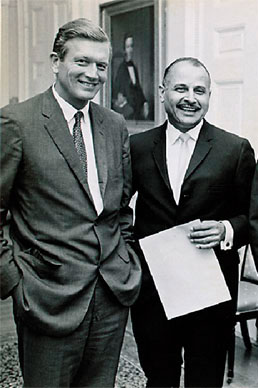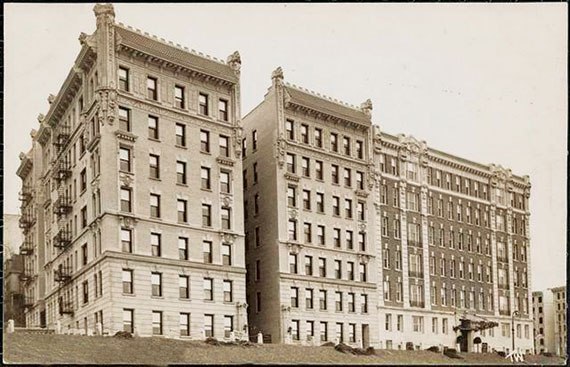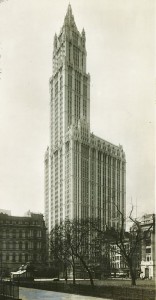Trending
This month in real estate history

1972: City OKs apartments in commercial towers
In an effort to keep homes in parts of Manhattan that were increasingly being dominated by office towers, the city approved a key zoning change 45 years ago this month.
The change allowed, for the first time, commercial skyscrapers to include residential space above the office portion of the buildings.
The city Board of Estimate, which controlled budget and land-use decisions, signed off on the plan despite opposition from Manhattan Borough President Percy Sutton and several of his counterparts in other boroughs, who cited concerns that the move would increase commercial development at the expense of residential.
The new zoning regulation covered 58th Street to Lower Manhattan.
Mayor John Lindsay supported the proposal, noting that under the previous rules, residential buildings could be demolished to create office towers, whereas this rule would encourage developers to replace those residential units as high-floor apartments.

Less than 1 percent of more than 320,000 recently built apartment units in Manhattan were vacant in 1944.
1944: Housing vacancy drops to new low
The vacancy rate for modern apartment units in Manhattan hit its lowest level ever as the nation’s economy boomed and the wave of soldiers returning home from World War II increased, 71 years ago this month.
Less than 1 percent of more than 320,000 recently built apartment units in Manhattan were vacant, according to a survey conducted by the Real Estate Board of New York. In more than 64,000 apartments in high-rise apartment buildings included in the survey, only 619 units were available.
The survey results, which excluded “old law” tenements and what were then described as slum buildings, stood in stark contrast to the vacancy rate during the Depression. In 1932, the analysis found the vacancy rate topped 17.7 percent. And in 1942, the rate was 9.8 percent.
The lack of available apartments led the city to declare a housing emergency in 1946. The emergency status was never lifted, because the vacancy rate has remained below 5 percent.
1913: Woolworth Buildings opens
The Woolworth Building in Lower Manhattan opened as the world’s tallest skyscraper, 102 years ago this month.

The Woolworth Building
The neo-Gothic tower at 233 Broadway was designed by architect Cass Gilbert for the F. W. Woolworth Company, one of the pioneers of the five-and-dime store model. The 60-story skyscraper, dubbed “The Cathedral of Commerce,” cost $13.5 million and was paid for in cash.
President Woodrow Wilson helped inaugurate the tower on opening day, April 24, by pressing a button in Washington that turned on the interior lights and external floodlights from afar.
At 792 feet tall, the skyscraper surpassed the Metropolitan Life Tower, at 1 Madison Avenue, as the tallest building in the world.
Early tenants in the building, in addition to Woolworth, included Irving Bank.
The Woolworth building remained the tallest in the world until the opening of 40 Wall Street in the Financial District in 1930.
It was the first office tower to use a retail arcade in its base. That model was picked up by other iconic skyscrapers such as the Chrysler and Empire State buildings.
The tower was designated a city landmark in 1983. Today, its upper floors are being converted to luxury residential apartments.




